1. Detroit, Michigan
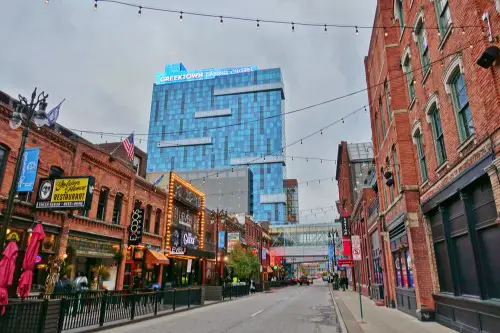
Once the heart of America’s automotive industry, Detroit was thriving with major car manufacturers like Ford, Chrysler, and General Motors calling it home. But after a sharp decline in manufacturing, the city faced an economic collapse, leading to a loss of jobs, an exodus of residents, and an overall decline in urban infrastructure, according to TIME Magazine. In the early 20th century, it was a symbol of American innovation, with its skyscrapers and bustling streets. Today, parts of Detroit feel almost frozen in time, with abandoned buildings, vacant lots, and a poverty rate higher than the national average.
The city has attempted a comeback in recent years with new businesses and a revitalized downtown, but the damage is done. Major neighborhoods still suffer from disinvestment, and the once-thriving cultural scene has significantly diminished. While Detroit still holds a strong sense of pride, it’s unrecognizable to many who remember its post-WWII prosperity. Despite this, there’s an undercurrent of hope, with some areas showing new life and even a resurgence in arts and entertainment.
2. Flint, Michigan
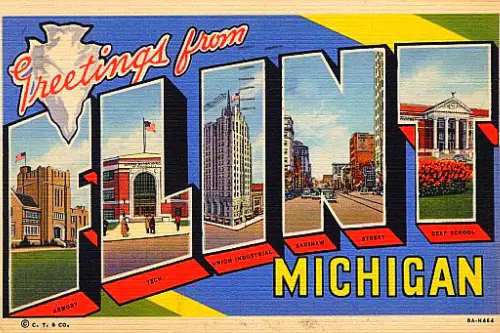
Flint used to be a bustling city thanks to its proximity to General Motors, where a large portion of the population worked in auto manufacturing. The economy, once booming, has taken a massive hit after GM downsized and eventually closed its factories. What was once a thriving industrial hub has now transformed into a city riddled with abandoned homes and empty storefronts, according to ABC12. The infamous water crisis, where residents were exposed to lead-contaminated water, has only deepened the city’s decline.
Despite ongoing efforts to recover, Flint has become nearly unrecognizable to anyone who remembers its prime. Unemployment is high, and the population has significantly dropped over the years. The crisis also left many without trust in local governance, making it harder for the city to regain momentum. However, grassroots organizations and a few innovative projects are working to revitalize the community, offering hope for the future.
3. New Orleans, Louisiana
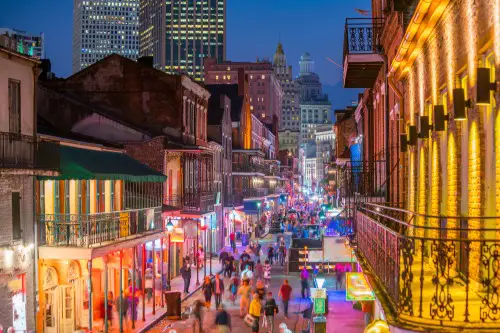
New Orleans was once an economic powerhouse in the early 19th century, renowned for its port, which was one of the busiest in the world. The city’s cultural vibrancy and thriving tourism industry made it a sought-after destination, but Hurricane Katrina in 2005 caused catastrophic flooding that wiped out large portions of the city. Whole neighborhoods were destroyed, and thousands of residents were displaced, leaving the city struggling to rebuild. Even after years of recovery, much of New Orleans still bears the scars of this disaster, according to NOLA.
Parts of the city have made significant strides in restoring infrastructure and bringing tourism back. However, many areas remain devastated, with neighborhoods that have yet to recover from the damage. Gentrification has also changed the landscape, pushing out longtime residents in favor of new development. The soul of New Orleans still lingers in the music and food culture, but the physical city is much different than it once was.
4. Camden, New Jersey
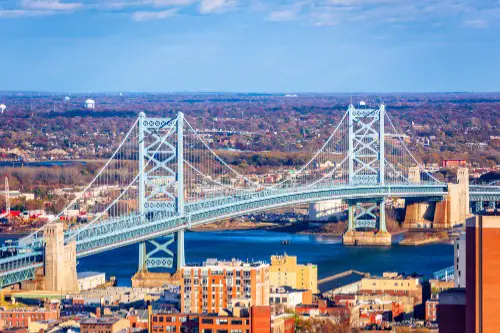
Once a thriving industrial city known for its factories and booming workforce, Camden has seen its fortunes plummet over the years, according to Business Insider. Declining manufacturing jobs, coupled with increased crime, poverty, and corruption, left the city struggling to keep its identity intact. Major companies like RCA, Campbell’s Soup, and RCA Victor were headquartered here, providing a steady stream of jobs and economic prosperity. But as these businesses moved out or closed, Camden saw a rapid decline in its economy and population.
Today, Camden is one of the poorest cities in the U.S., with high crime rates and empty factories dotting the landscape. The city’s once-proud waterfront is barely recognizable due to years of disinvestment and neglect. While there have been some efforts to attract new businesses and revitalize the waterfront, these changes have yet to reach the core of the city. The remnants of its former self are still visible, but they paint a sad picture of what once was.
5. Pittsburgh, Pennsylvania
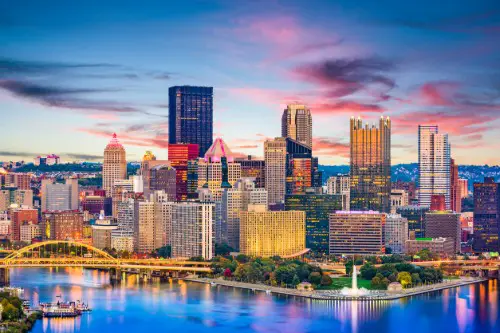
Pittsburgh, once the steel capital of the world, was a booming industrial powerhouse that drew workers from across the nation. Steel mills lined the rivers, and the city’s factories kept it humming with activity. However, the steel industry began to decline in the late 20th century, leading to massive layoffs and factory closures. The once-thriving economy crumbled, and many neighborhoods became economically depressed as jobs disappeared, according to The Center Square.
Despite the decline, Pittsburgh managed to reinvent itself as a hub for healthcare, education, and technology. The city has undergone a transformation in recent decades, with new developments sprouting in place of old factories. Still, much of the city’s original industrial vibe is gone, replaced by modern buildings and office parks. For those who remember the bustling steel mills, Pittsburgh’s new identity can feel like a completely different place.
6. St. Louis, Missouri
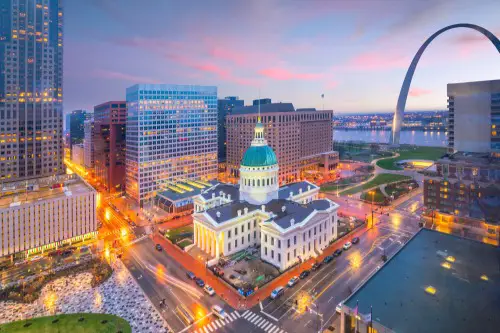
St. Louis was once a major economic and cultural center, with a booming economy fueled by manufacturing and a rich history in jazz and blues music. Its iconic Gateway Arch symbolized the city’s role in American expansion, and its location along the Mississippi River made it a critical transportation hub. However, as industries began to move overseas and the city’s population decreased, many of St. Louis’s neighborhoods fell into disrepair. Abandoned buildings and empty lots became a common sight in the once-thriving downtown area.
While St. Louis still holds a special place in American history and culture, much of its economic vibrancy has vanished. Efforts to revive the city’s economy have had mixed results, with some parts of downtown seeing growth, but the surrounding areas remain mired in poverty and decline. The city has lost a significant portion of its manufacturing base, and many of its iconic landmarks are surrounded by empty, decaying infrastructure. Still, there’s a strong sense of community and local pride, even as the city struggles to find its footing.
7. Gary, Indiana
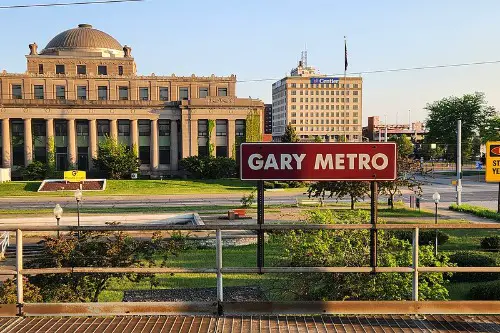
Gary, Indiana, was once a bustling industrial city thanks to its steel mills and manufacturing plants. The city boomed during the 20th century, providing jobs to thousands of workers, many of whom moved there from other states. However, the decline of the steel industry in the late 20th century hit Gary hard, leading to mass layoffs and a population exodus. Today, the city’s steel mills are barely operational, and much of its population has moved elsewhere in search of work.
Gary is a shadow of its former self, with large sections of the city now abandoned and in disrepair. Its economy has never recovered from the loss of its manufacturing base, and the population has dwindled to a fraction of what it once was. The once-vibrant downtown is now full of empty storefronts, and the city’s housing stock is in poor condition. Despite the challenges, there have been some attempts at revitalizing Gary, with new businesses and investments in infrastructure, but the road to recovery is long.
8. Akron, Ohio
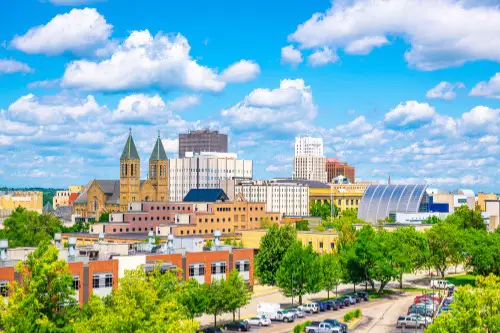
Akron, once known as the “Rubber Capital of the World,” thrived during the 20th century, home to tire giants like Goodyear and Firestone. The city was at the forefront of the rubber industry, with thousands of workers employed in its factories. However, as these companies moved their operations overseas or downsized, Akron’s economy began to falter. The city went from being an industrial powerhouse to one struggling with unemployment and a shrinking population.
Today, Akron is still grappling with the aftermath of its industrial decline. While it has made efforts to diversify its economy by focusing on healthcare, education, and technology, the scars of its past are still visible. The once-bustling factory districts are now ghost towns, and many of the historic homes have fallen into disrepair. Akron is slowly reinventing itself, but it’s a far cry from the thriving metropolis it once was.
9. Buffalo, New York
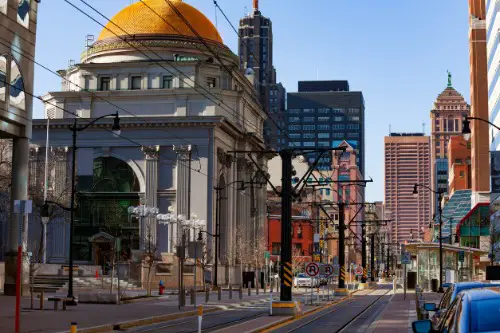
Buffalo, located on the shores of Lake Erie, was once a booming industrial city, particularly known for its steel production and grain milling industries. The city’s strategic location near the U.S.-Canada border made it a crucial hub for trade and transportation. But as manufacturing jobs moved elsewhere and the city faced a series of economic setbacks, Buffalo began to decline. The iconic grain elevators and factories that once dotted its skyline are now relics of a bygone era.
Today, Buffalo is a city in transition. While there have been efforts to revitalize its downtown and waterfront areas, much of the city’s former vibrancy has disappeared. The population has decreased dramatically over the years, and many neighborhoods remain underdeveloped. However, Buffalo has seen a resurgence in certain areas, particularly in tech and healthcare, offering a glimmer of hope for the city’s future.
10. Baltimore, Maryland
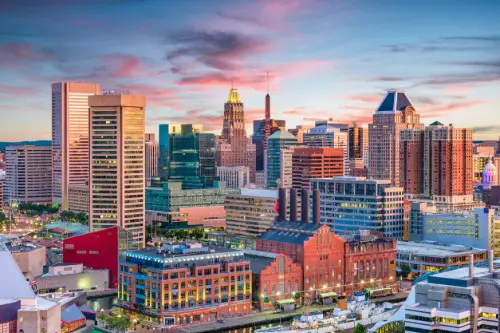
Baltimore, once a major port city and industrial hub, has gone through significant economic changes in the past few decades. The city’s economy was largely based on shipping, manufacturing, and steel production, which provided jobs to a large portion of its population. However, the decline of manufacturing and the shipping industry, combined with rising crime rates, contributed to a steady decline in the city’s fortunes. Today, many of its former industrial zones are abandoned, and the once-thriving harbor area has seen better days.
While the city has tried to reinvent itself through tourism, education, and healthcare, parts of Baltimore are still struggling. Many neighborhoods remain economically distressed, and the population has steadily decreased. Baltimore’s historic architecture still tells the story of a once-thriving city, but the lack of investment in many areas has left it looking worn down. There’s hope on the horizon with new developments and gentrification, but much of the city’s past vibrancy is hard to ignore.
11. Newark, New Jersey
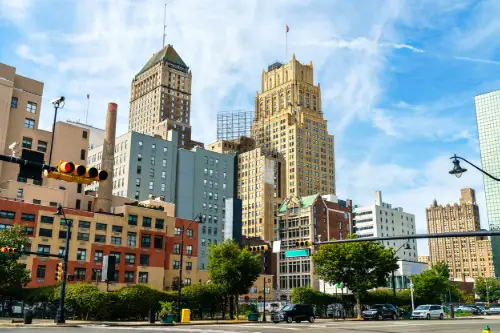
Newark was once a major industrial and transportation hub, home to large factories and an important rail center. Its proximity to New York City also made it a prime location for businesses and shipping. However, as industries closed and the manufacturing sector dwindled, Newark faced a severe economic downturn. The city also experienced race riots in the 1960s, which led to widespread destruction and a mass migration of residents to the suburbs.
In recent years, Newark has made strides in attracting new businesses and improving its infrastructure. Still, much of the city remains economically distressed, with high poverty rates and abandoned buildings in many neighborhoods. The once-bustling industrial landscape has given way to vacant factories and decaying streets. While there’s a push for revitalization, Newark’s transformation is a long-term effort that faces many challenges.
12. Rochester, New York
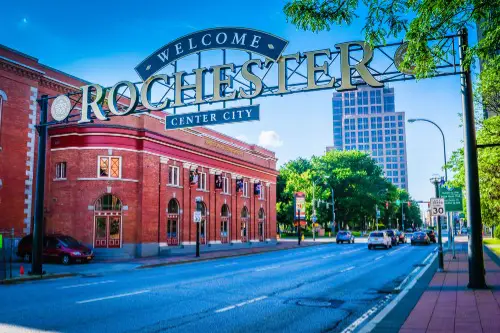
Rochester was once an innovation hub, home to major companies like Eastman Kodak, Xerox, and Bausch & Lomb. The city was a pioneer in the fields of photography, optics, and imaging, and it attracted a booming workforce. However, as technology advanced and these companies faced stiff competition, Rochester’s economy began to falter. The closure of Kodak’s massive film plants in the early 21st century was a major blow to the city.
While the city has attempted to reinvent itself, it’s still struggling to recover. Many of Rochester’s once-bustling neighborhoods have become ghost towns, with empty buildings and a shrinking population. The city’s economy has shifted away from manufacturing to education and healthcare, but the loss of its industrial base is still felt today. Although there are pockets of revitalization, the city’s identity as a manufacturing powerhouse is gone, replaced by a quieter, more subdued atmosphere.
13. Youngstown, Ohio
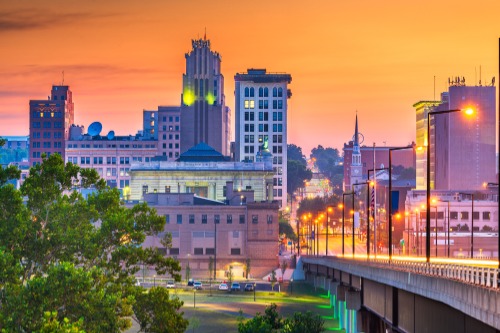
Youngstown was once a thriving steel town, fueled by its booming steel mills and industrial workforce. The city’s fortunes were closely tied to the steel industry, which provided thousands of jobs and supported the local economy. However, as the U.S. steel industry collapsed in the 1970s and 1980s, Youngstown’s economy took a massive hit. Once a vibrant community, the city now struggles with unemployment, poverty, and abandoned buildings.
Today, Youngstown is one of the most economically depressed cities in Ohio, with much of its population leaving in search of better opportunities. The once-bustling steel mills are now empty, and the city has not been able to fully recover from the loss of its industrial backbone. While there are efforts to attract new businesses and revitalize certain areas, the city’s struggle to find its new identity remains a challenge. The steel mills are gone, and the future of Youngstown is still uncertain.
14. Springfield, Massachusetts
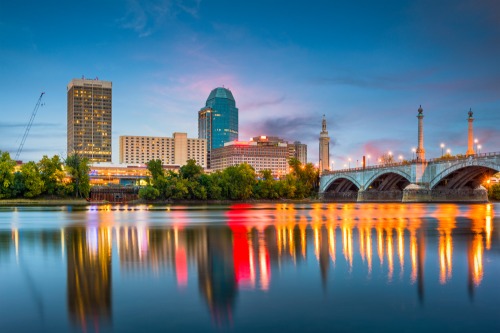
Springfield, once a key center of industry and innovation, is now unrecognizable in comparison to its heyday. It was home to several important manufacturers, including the famous Smith & Wesson firearms company, and had a booming economy based on manufacturing. But as the city’s industrial base eroded and its population declined, Springfield became one of many former industrial cities struggling to survive. Crime and poverty rates have surged in recent decades, and many neighborhoods are now facing disrepair.
In recent years, Springfield has tried to revive itself through various redevelopment projects, but the city remains deeply challenged. Efforts to attract new industries have had limited success, and parts of the downtown area still show signs of urban decay. The city’s once-thriving factories are now largely gone, and the spirit of innovation that once characterized Springfield feels like a distant memory. Despite this, the city’s rich history and ongoing revitalization efforts provide hope for its future.


